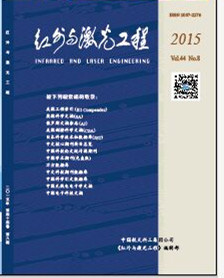|
[1]
|
Wang Bin, Wang Zhongyang, Wu Yuanhao, et al. Calibration of no-common path aberration in AO system using multi-channel phase diversity wave-front sensing[J]. Optics and Precision Engineering, 2013, 21(7): 1683-1692. (in Chinese) 王斌, 汪宗洋, 吴元昊, 等. 利用多通道相位差异波前探测法检测自适应光学系统非共光路像差[J]. 光学 精密工程, 2013, 21(7): 1683-1692. |
|
[2]
|
Mozurkewich D, Jorgensen A M, Schmidt H R, et al. Interferometric imaging of geostationary satellites: signal-to-noise considerations[Z]. Naval Research Lab, Washington DC, 2011. |
|
[3]
|
McAlister H A, Ten Brummelaar T A, Gies D R, et al. First results from the CHARA Array. I. An interferometric and spectroscopic study of the fast rotator Leonis (Regulus)[J]. The Astrophysical Journal, 2005, 628(1): 439. |
|
[4]
|
Cheng Wei, Li Quan, Wang Yangui, et al. Object reconstruction of Fourier telescopy based on all-phase spectrum analysis[J]. Acta Optica Sinica, 2010, 33(12): 3441-3446. (in Chinese) 陈卫, 黎全, 王雁桂,等. 基于全相位谱分析的傅里叶望远术目标重构[J]. 光学学报, 2010, 33(12): 3441-3446. |
|
[5]
|
LeBohec S, Holder J. Optical intensity interferometry with atmospheric cerenkov telescope arrays[J]. The Astrophysical Journal, 2008, 649(1): 399. |
|
[6]
|
Pellizzari C, Holmes R, Knox K. Intensity interferometry experiments and simulations[C]//Unconventional Imaging and Wavefront Sensing 2012, 2012, 8520: 85200J1-17. |
|
[7]
|
Hussein I I, Scheeres D J, Hyland D C. Interferometric observatories in Earth orbit[J]. Journal of Guidance Control and Dynamics, 2004, 27(2): 297-300. |
|
[8]
|
Dravins D, LeBohec S, Jensen H, et al. Optical intensity interferometry with the Cherenkov Telescope Array[J]. Astroparticle Physics, 2013, 43: 331-347. |
|
[9]
|
Tasca D S, Edgar M P, Izdebski F, et al. Optimizing the use of detector arrays for measuring intensity correlations of photon pairs[J]. Physical Review A, 2013, 88(1): 13816. |
|
[10]
|
Brown R H, Twiss R Q. Interferometry of the intensity fluctuations in light II. An experimental test of the theory for partially coherent light[J]. Proceedings of the Royal Society of London Series A Mathematical and Physical Sciences, 1958, 243(1234): 291-319. |
|
[11]
|
Millour F. All you ever wanted to know about optical long baseline stellar interferometry, but were too shy to ask your adviser[J]. New Astronomy Reviews, 2008, 52(2): 177-185. |
|
[12]
|
Brown R H. The Intensity Interferometer: Its Application to Astronomy [M]. London: Halsted Press, 1974: 57-62. |
|
[13]
|
Strekalov D V, Erkmen B I, Yu N. Intensity interferometry for observation of dark objects[J]. Physical Review A, 2013, 88(5): 53837. |
|
[14]
|
Huo Qiang. Multi-channel Coincidence Counter based on FPGA[D]. Taiyuan: Shanxi University, 2011. (in Chinese) 霍强. 基于FPGA的多通道符合计数器[D]. 太原: 山西大学, 2011. |
|
[15]
|
Bajorski P. Statistics for Imaging, Optics, and Photonics[M]. New York: John Wiley Sons, 2011: 38-42. |
|
[16]
|
Rou J, Nu N Ez P D, Kieda D, et al. Monte Carlo simulation of stellar intensity interferometry[J]. Monthly Notices of the Royal Astronomical Society, 2013, 430(4):3187-3195. |
|
[17]
|
Goodman J W. Statistical Optics[M]. New York: Courier Dover Publications, 2004: 115-121. |
|
[18]
|
Zhao Sui, Guo Jin, Liu Hongbo, et al. Application of multi-pixel photon counters to single photon detection [J]. Optics and Precision Engineering, 2011, 19(5): 972-976. (in Chinese) 赵帅, 郭劲, 刘洪波, 等. 多像素光子计数器在单光子探测中的应用[J]. 光学 精密工程, 2011, 19(5): 972-976. |









 DownLoad:
DownLoad: